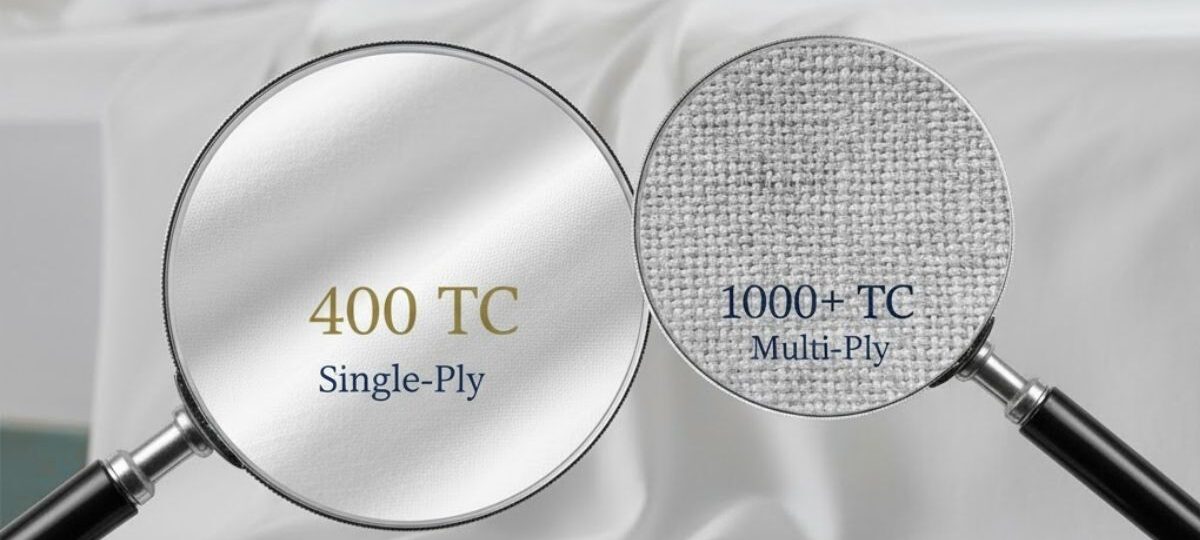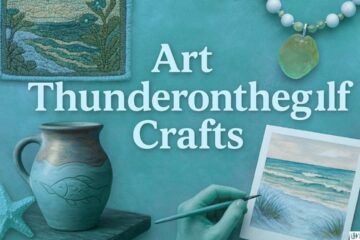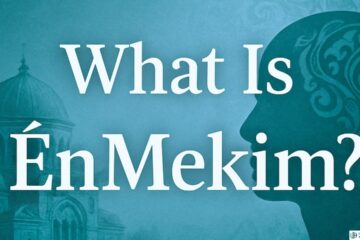What is the best thread count for sheets? The search for the perfect set of sheets often begins—and ends—with a single number: thread count. For decades, this figure has been marketed as the ultimate measure of quality, leading millions of consumers to believe that a 1,000-thread count sheet is automatically superior to a 400-thread count sheet.
But what if this common wisdom is a myth?
The reality is that chasing the highest number on the packaging is a costly mistake. Textile experts agree that while thread count is a factor, it is only one piece of a much larger puzzle. The true quality of your sheets—their softness, breathability, and durability—depends far more on the fiber material, the ply of the yarn, and the fabric’s weave.
In this ultimate guide, we unravel the thread count myth, reveal the optimal range for truly luxurious sheets, and show you exactly what to look for when investing in your sleep.
The Thread Count Myth: What Does the Number Mean?
Thread count (TC) is simply the total number of threads—both lengthwise (warp) and widthwise (weft)—woven together in one square inch of fabric.
A sheet with a 400 thread count, for example, might have 200 warp threads and 200 weft threads.
The Ideal Thread Count Range
The maximum number of genuine, high-quality, single-strand threads that can naturally be woven into a square inch of cotton fabric is around 500 to 600. Pushing beyond this limit requires manufacturers to employ deceptive techniques, which often lower the actual quality of the sheet.
| Quality Tier | Ideal Thread Count Range (TC) | Key Characteristic |
| Good Quality | 200-300 | Durable, standard feel, great for everyday use. |
| Best Quality | 300-400 | Excellent balance of softness, breathability, and strength. |
| Luxury/Premium | 400-600 | Smoother, more luxurious feel; the optimal sweet spot. |
| Overkill/Suspect | 800+ | Often artificially inflated; can be heavy, stiff, or less breathable. |
The Takeaway: When shopping for premium cotton sheets, the sweet spot is generally 300 to 600 TC. Anything advertised above 800 TC should be met with suspicion and a closer inspection of the label.
The Thread Count Deception: Understanding Ply
The secret behind those eye-popping 1,000+ thread counts lies in a technique called ply. Ply refers to how many individual strands of yarn are twisted together to create a single thread used in the weaving process.
1. Single-Ply Yarn (The Gold Standard)
- Definition: One single, strong, continuous strand of yarn is used.
- Quality: Single-ply yarn is made from long-staple (long-fiber) cotton, which is naturally stronger and softer, requiring fewer strands to achieve durability.
- Count: The thread count you see (e.g., 400 TC) is the true number of threads per square inch. Single-ply sheets are softer, lighter, and more breathable.
2. Multi-Ply Yarn (The Inflator)
- Definition: Two or more thinner, often lower-quality, shorter strands are twisted together to make one thicker thread (e.g., two-ply or three-ply).
- Deception: Manufacturers count each strand in the ply as a separate thread. A 300-count fabric made with two-ply yarn is legally labeled as 600 thread count.
- Quality Impact: Multi-ply sheets use shorter, weaker cotton fibers and result in a fabric that is thicker, heavier, less flexible, and significantly less breathable than a single-ply sheet with a lower thread count. They also tend to pill and wear out faster.
In summary: A 300-400 single-ply cotton sheet will almost always feel and perform better than a 600-800 multi-ply sheet. The high number often hides the poor quality of the raw material.
Beyond the Number: Three Factors That Matter More
If thread count is the distraction, then these three factors are the true measure of a sheet’s quality:
1. Fiber Material (Staple Length is King)
The type of cotton and the length of its fiber (or staple) are the most critical elements affecting softness and longevity.
- Extra-Long Staple (ELS) Cotton (The Best): This includes Egyptian Cotton and Supima/Pima Cotton. ELS fibers are longer, producing a finer, smoother yarn with fewer ends poking out. The resulting fabric is incredibly soft, naturally lustrous, and resistant to pilling, getting softer with every wash.
- Long Staple Cotton (Excellent): A high-quality fiber that offers great durability and comfort.
- Upland Cotton (Standard): Shorter-staple cotton, making up the majority of cotton grown worldwide. It’s often used in lower-cost sheets and tends to feel rougher and wear out faster.
Tip: Always look for labels that explicitly state “100% Long-Staple Cotton,” “Egyptian Cotton,” or “Supima Cotton.”
2. Weave (Your Comfort Preference)
The weave dictates the sheet’s texture, look, and temperature. The two most common weaves are Percale and Sateen.
| Weave Type | Feel & Appearance | Best For… | Ideal TC Range |
| Percale | Crisp, cool, matte finish. Simple, durable one-over, one-under weave. | Hot sleepers, warm climates, or those who love the “classic hotel” feel. | 200-400 |
| Sateen | Buttery soft, slightly heavier, with a subtle, luminous sheen. Four-over, one-under weave. | Cooler sleepers, cold climates, or those who prefer a silky, smooth drape. | 300-600 |
3. Specialty Fibers (When Cotton Isn’t The Goal)
Not all quality sheets are measured by thread count. Certain luxury materials use different metrics:
- Linen: Made from the flax plant, linen is known for its natural texture, breathability, and durability. It’s measured by GSM (Grams per Square Meter), not TC, and has a very low thread count (often 80–140 TC) due to the thickness of the flax fibers.
- Tencel/Lyocell: Made from eucalyptus wood pulp, Tencel is extremely soft, breathable, and excellent at wicking moisture. It is typically measured by GSM.
- Silk: Measured in momme (mm), which is a unit of weight. The best quality silk sheets typically fall between 19mm and 25mm.
How to Shop for the Best Sheets: A Final Checklist
Stop focusing on the bloated number and start prioritizing the textile fundamentals. Use this checklist to become an informed shopper:
- Prioritize Fiber Quality: Look for 100% long-staple cotton, ideally Egyptian or Supima. This is the single biggest indicator of luxury and longevity.
- Verify the Ply: Seek out sheets explicitly labeled as single-ply. If the thread count is over 600 and the price seems too good to be true, it is likely multi-ply.
- Choose Your Weave: Decide if you prefer Percale (crisp and cool) or Sateen (silky and warm).
- Target the Right Thread Count: Aim for the sweet spot of 300 to 600 TC. For pure cotton, a 400 TC made with ELS single-ply yarn is considered the pinnacle of luxury.
Forget the marketing hype and the race to 1,000. True quality in bedding is found not in a number, but in the fine, long fibers and careful construction that ensure your sheets are soft, strong, and perfectly tailored for a restorative night’s sleep.
See Also: StyleInVenture com: Your Ultimate Guide to Contemporary Fashion










